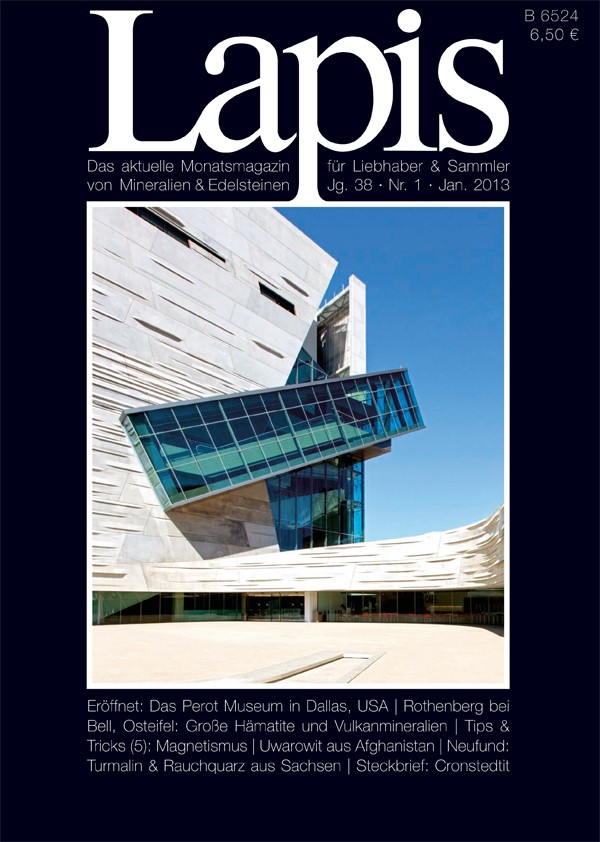The Perot Museum of Nature and Science - Rob Lavinsky
This article by Dr. Robert Lavinsky was originally published in Lapis Magazine, January 2013 in German from this English text. For complete text in German, please contact info@iRocks.com
A museum review highlighting the Lyda Hill Gems and Minerals Hall in Dallas, Texas
By Dr. Robert Lavinsky
Originally published in the January 2013 edition of Lapis
Dallas is the largest city in central Texas, with an urban population of approximately 6 million people within a 2-hour radius, and it is blessed with absolutely nothing mineralogical in the ground except natural gas and oil. Now, the Perot Museum of Nature and Science in Dallas has opened its doors adjacent to the downtown business area and the Dallas Arts District. It is named after computer-industry businessman Ross Perot and his wife, Margot, in recognition of their children’s contributions to fund the building, and of Perot’s contribution to computer technology and use as an industry in Texas. “Its goal is all about inspiring curiosity. Getting Texas children excited about science early will pay dividends later,” as Ross and Margot Perot said in a recent interview.
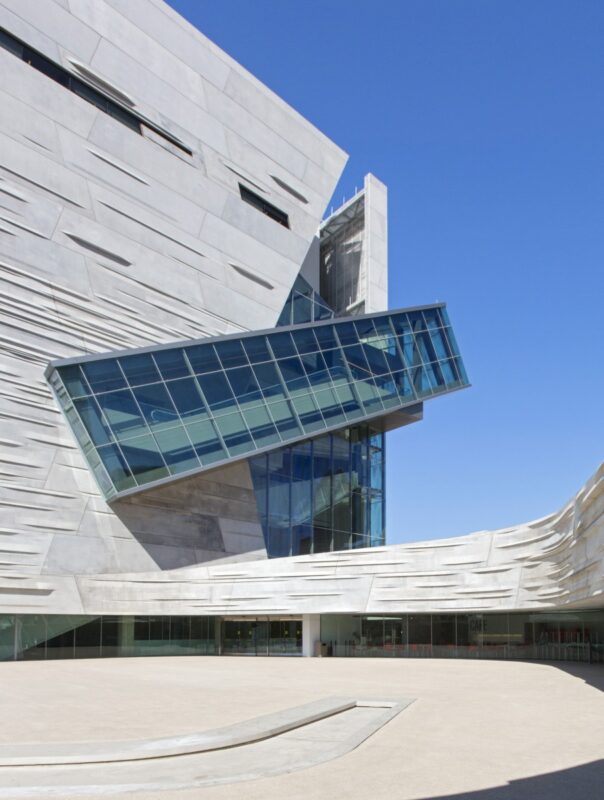
THE MUSEUM
The Perot Museum represents a new experiment in museum building in several ways, quite unlike the other major metropolitan museums of the United States and Europe that are supported with public funds (and debt). Firstly, it was built only with private money after numerous fundraising events and campaigns, with no public money or any kind of debt. To change the traditional dynamic and build a museum for the next century, Nicole G. Small, a former McKinsey & Company consultant with business experience, was brought on staff to lead the museum team. In 2006, she pulled together and unified three different museums including the Dallas Children’s Museum, The Science Place, and the old Dallas Museum of Natural History resulting in the Museum of Nature & Science at Fair Park, which would later become the Perot Museum of Nature and Science near downtown Dallas.
Newly opened on December 1, 2012, the Perot Museum is 180,000 square feet. It is a remarkable building that integrates sustainability, technology and nature in its design. Nicole also spearheaded a selection process, which led to the selection of 2005 Pritzker Prize Laureate Thom Mayne and his California firm Morphosis Architects to design a modern “green,” energy-efficient building that was also stimulation for the senses. Numerous exhibits in all fields grace the museum, with 11 permanent exhibit halls, including many engaging and interactive features such as “Shale Voyager,” in which riders take a simulated journey down a mile-long borehole in search of oil and gas, and experience and learn about the drilling/fracking process firsthand in this shaking, moving, educational simulator.
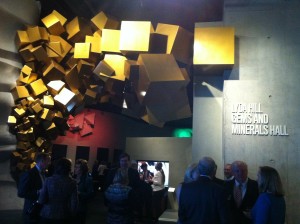
Secondly, and from our point of view as mineral collectors perhaps more novel yet, it was recognized from the beginning that the museum could not currently compete with the private collecting community to buy the kind of inspiring, world-class mineral specimens they wanted to show to the public. Instead, the museum called on the large Texas collecting community to participate in loans of extraordinary specimens for the displays. This allowed the museum to present a world class collection from opening day. The minerals will be rotated over time, keeping them dynamic and exciting, with access to some of the best specimens from the local collector group. It is hoped that, over the long years to come, some of those specimens and collections might be donated and given a permanent home there as well. The museum displays these mineral specimens in gallery cases suitable for the finest art, in a darkened hall that feels a lot more like an art gallery than a traditional, stolid, perhaps boring old museum. The effect is to see these specimens we love as true treasures, displayed and presented as if they were valuable works of sculpture instead of as mere “rocks on a shelf.” In the mineral hall are numerous engaging activities using computer simulations and videos to learn about what makes a mineral, how crystals grow, and what causes color and form in minerals.
THE LYDA HILL GEMS and MINERALS HALL
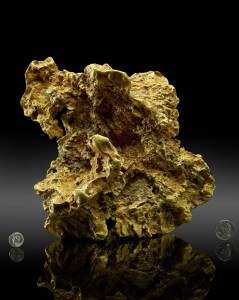
The mineral hall itself is so lavishly built due to a generous $15 million donation from mineral collector Lyda Hill of Dallas, and named after her. Another 13 collectors contributed specimens to the hall for display. Highlights of the 2,700-square- foot hall include dozens of display cases of fine minerals, a recreated pocket approximately 1.5 meters tall of gem tourmaline and quartz crystals from the Pederneira Mine (donated by Daniel Trinchillo, who also acted as the first curator), a case of fluorescent minerals on timed lighting, The museum displays the third- largest gold nugget surviving today (and perhaps the most aesthetic), the approx 750-ounce Ausrox nugget. The museum also displays the largest crystallized gold specimen ever found in North America, from the 16-to-1 Mine in the Northern California gold district.
Near the entrance is an imposing sight even for jaded collectors: a large, rich purple amethyst geode from Uruguay measuring nearly 6 feet tall and massing thousands of kilos. It is attached to a series of hydraulic wheels and levered so perfectly on them that even my 25-pound, 2-year-old baby can turn the wheel in front and watch these giant geode halves open and close. All it is missing is Wagner music playing in the background as it opens! This open-and-closing geode is nicknamed “Grape Jelly” and is said to be one of the ten must-see items in the museum for children and adults alike.
Dallas finally has a mineral exhibit worthy of putting the city on a map for an overnight visit by collectors, especially for any collector who is already travelling from Germany to the Tucson show. There are easy, direct flights to Dallas from Stuttgart and Frankfurt; and from the Dallas (DFW) airport you can then continue on to the Tucson show in the shortest and most direct line of travel.
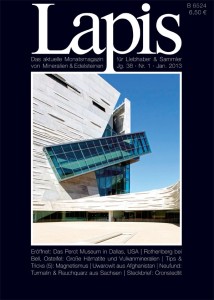
This article by Dr. Robert Lavinsky was originally published in Lapis Magazine, January 2013 in German from this English text. For complete text in German, please contact info@iRocks.com.
The Arkenstone, located a short drive from the Perot Museum, is the closest dealer of fine minerals to the museum and has the largest inventory of fine minerals in the world. Contact gallery@iRocks.com to schedule a visit.
